Visiting Vat Phou from Pakse: a Quick Guide
This post may contain affiliate links. If you make a purchase using one of these links, I may receive a small reward at no extra cost to you. See my Disclosure Policy for more information.
Laos has 3 UNESCO heritage sites:
- Luang Prabang: Laos’ crown jewel (now endangered because of a new dam)
- Plain of Jars: bizarre megalithic remains and the newest UNESCO site in Laos since 2019.
- Vat Phou: a Hindu temple built by the Khmer Empire in the 11th century
I recently had the pleasure to visit the last one: Vat Phou (also spelled Vat Pho, or Wat Phou BUT NOT Wat Pho which is a different temple in Bangkok).
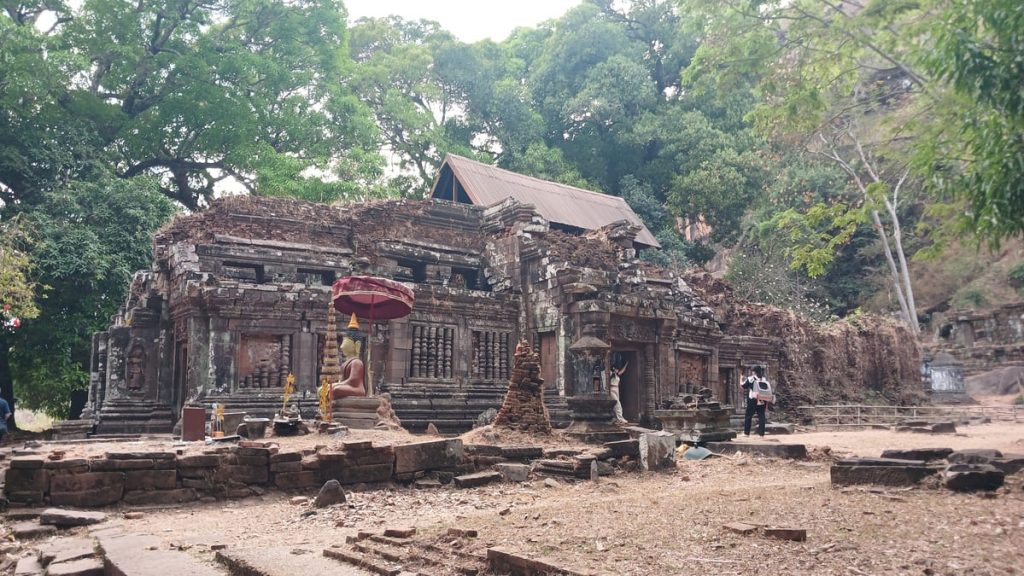
It’s often compared to Angkor Wat, some 200 km to the southwest. After all, it was built by the same people – the Hindu Khmers. But where Angor Wat is 100+ km in circumference (the complex, not the main temple), Vat Phou can be visited and explored in an hour, maybe 2.
Here’s how to visit Van Phou on a day trip from Pakse.
How to get to Vat Phou from Pakse by motorcycle
There are a few ways to get to Vat Phou. The best and most convenient is by rented motorcycle.
You can squeeze in a half-day trip to the temple on the last day of your Bolaven Plateau Loop adventure.
The road distance between downtown Pakse and Vat Phou is around 45 km.
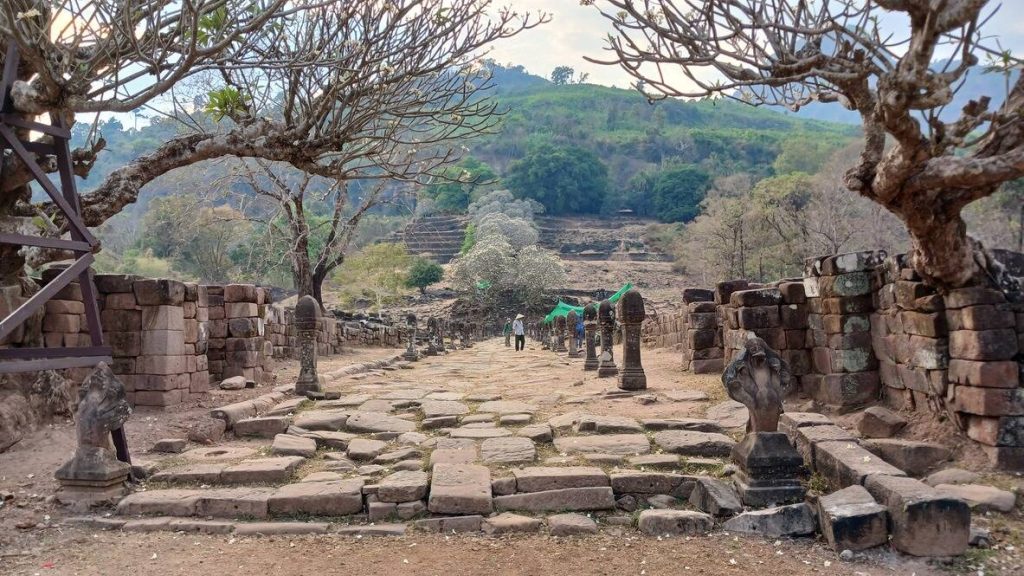
Cross the Lao-Nippon bridge over the Mekong, continue on the 16W until the first checkpoint, then turn left and go straight for 40 km.
Talking of checkpoints, they are only for 4-wheeled vehicles to pay tolls. Motorcycles go past them through the rightmost opening. There are 2 such checkpoints between Pakse and Champasak.
The road is relatively new (in early 2024) and in awesome condition. Not just for Laos standards – it’s just a pretty good road.
Once you arrive in Champasak, you will start seeing signs directing you to Vat Phou.
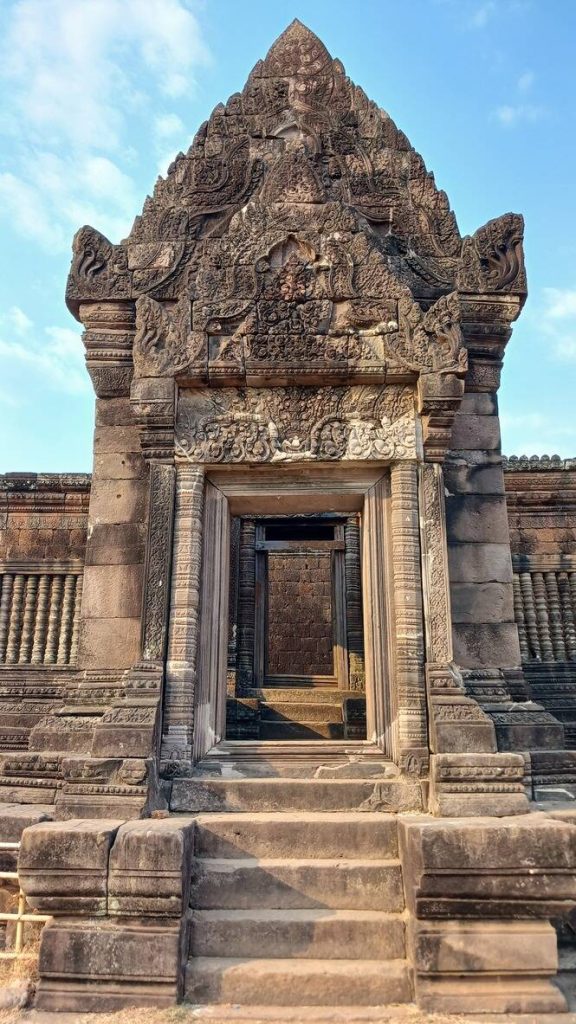
Follow the signs/road until you see the gated entrance with a sign saying “Entrance Vat Phou 200 m.” with an arrow to the right.
Vat Phou Entrance Fee (and how to be cheeky)
The entrance fee to Vat Phou is 50.000 LAK (2.4$) for foreigners and 20.000 LAK (1$) for locals. An electric car service and entrance to the museum are included in the price.
It is one of the cheapest UNESCO heritage sites in the world!
For comparison, Angkor Wat’s day ticket costs 37$, Borobudur in Indonesia costs 30$, nearby Prambanan costs 24$, and even My Son Sanctuary in neighboring Vietnam, which is similar in scale to Vat Phou, costs around 6$.
And yet, if you want to be cheeky and avoid the entrance fee, there’s a way.

Instead of going right towards the ticket booths, go left. Follow the road for 2 km until it ends, then turn right. The left turn leads you to Hong Nang Sida Ruins.
Park at the restaurant/supermarket right next to the fence. Pay 5.000 for parking, then just enter through the stairs gap in the fence. Voila, you’re in Vat Phou for free.
What to see inside
If you enter from the main entrance, there are two large pools of water on both sides of a perfectly straight 1.5 km processional walkway.
If you enter from the cheeky side entrance, you’ll be meters away from two identical halls that are currently being restored.
Behind the south one are the ruins of Nandin Temple.
Walk a little further on the symmetric cobblestone path and you will reach the Dvarapala – a fierce stone guardian marking the official entrance to the holy site.

194 steps up and you’ll be at the top. In front of you is the main temple – Vat Phou.
The area is high and compared to the flat lowlands below, it allows for views almost as far as the Mekong.
Walk around the area at the top and look for:
- The Elephant Head
- The Crocodile Carving
- Buddha’s Footprint
- The Trimurti Relief
- The Holy Spring
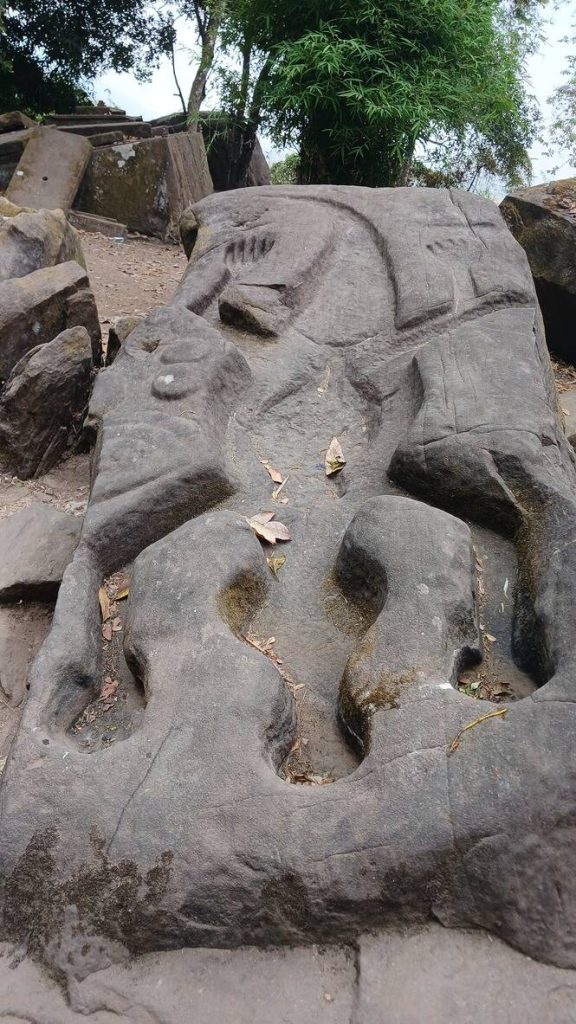
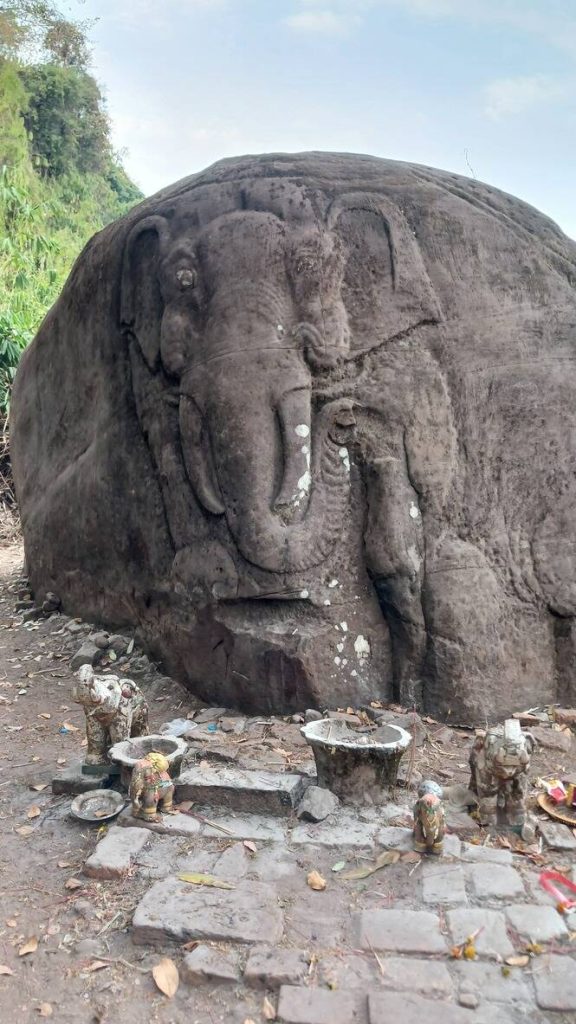
Don’t forget to enter Vat Phou proper and if you’re a pious Buddhist by chance, ring the gong and pray.
That’s about it. From entry to exit, a visit to Vat Phou takes around 2 hours.
A quick guide to Vat Phou’s history and significance
Did you know that Vat Phou is older than Angkor Wat?
That’s right, Angkor Wat was built in the 12th century, whereas Vat Phou precedes it by at least 100 years!
In the beginning, Vat Phou was a Hindu temple, dedicated to Shiva of the Trimurti – the Trinity of Gods in Hinduism (Brahma, Vishnu, Shiva).
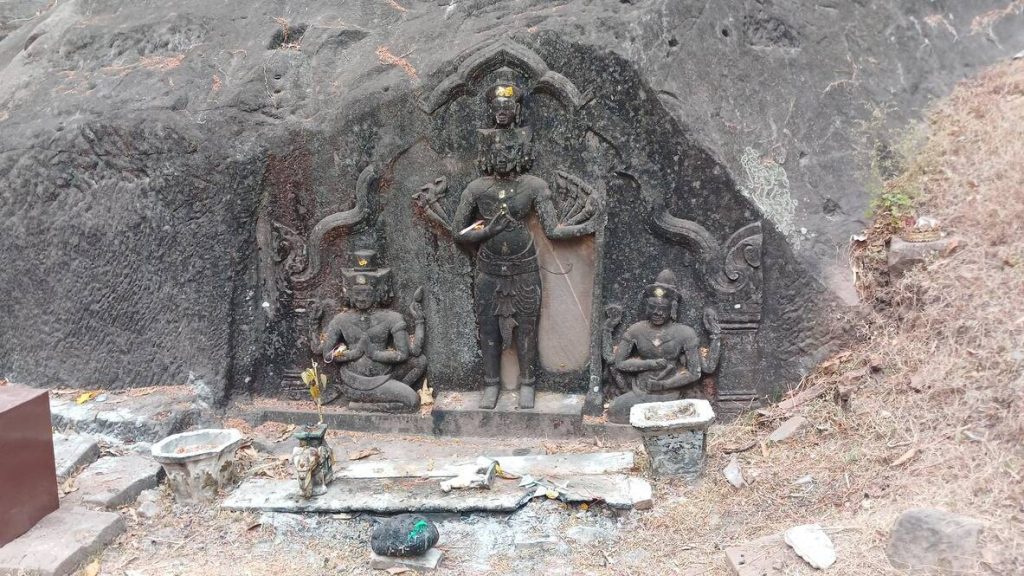
At some point in history, it was transformed into a Buddhist prayer site which is still the case today.
This means that it’s also unique in the way that Hindu and Buddhist imagery are mixed on-site. Shiva, then Buddha, then an elephant (respected in Buddhism), then more Hindu inscriptions and signs.
Add to that the perfect axis of the temple, the elevated location, and the imposing peak behind it and you have a truly remarkable site. To those interested in history – do not miss!
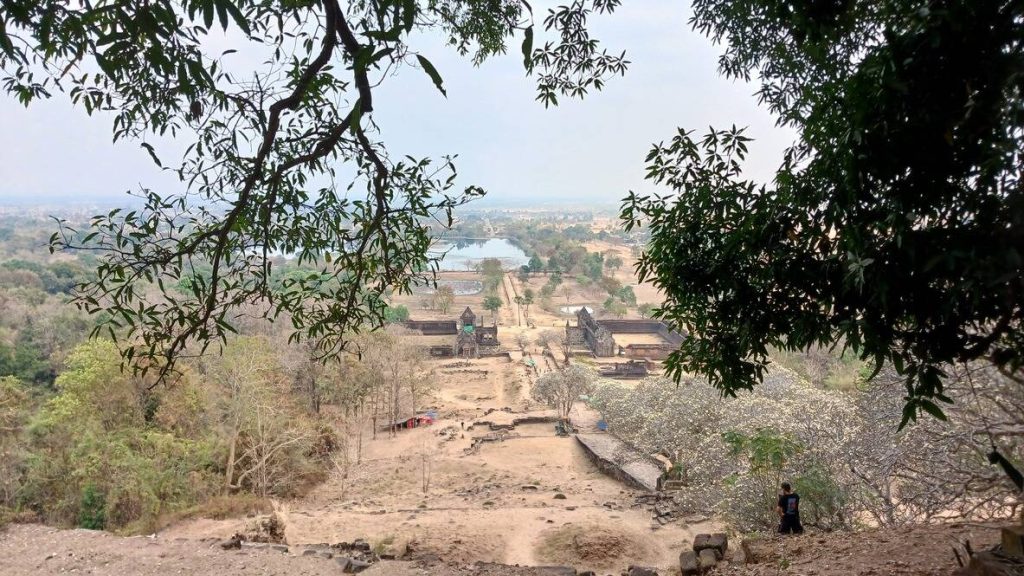
Vat Phou Opening Times
Vat Phou is open every day from 8:00 AM to 6:00 PM.
The Vat Phou museum is open daily from 8 AM to 4 PM.
It is possible to visit the temple outside of normal opening hours by asking for permission in advance and paying a little extra.
Hong Nang Sida
Hong Nang Sida is not officially part of Vat Phou, but it is definitely connected historically and thematically.
It’s still under restoration and when I visited, hundreds of stone pillars were numbered and ordered on the ground, ready to be arranged in order to recreate the temple.
A ruinous temple lies nearby, with a scary-looking 5-headed cobra statue guarding the stairs.
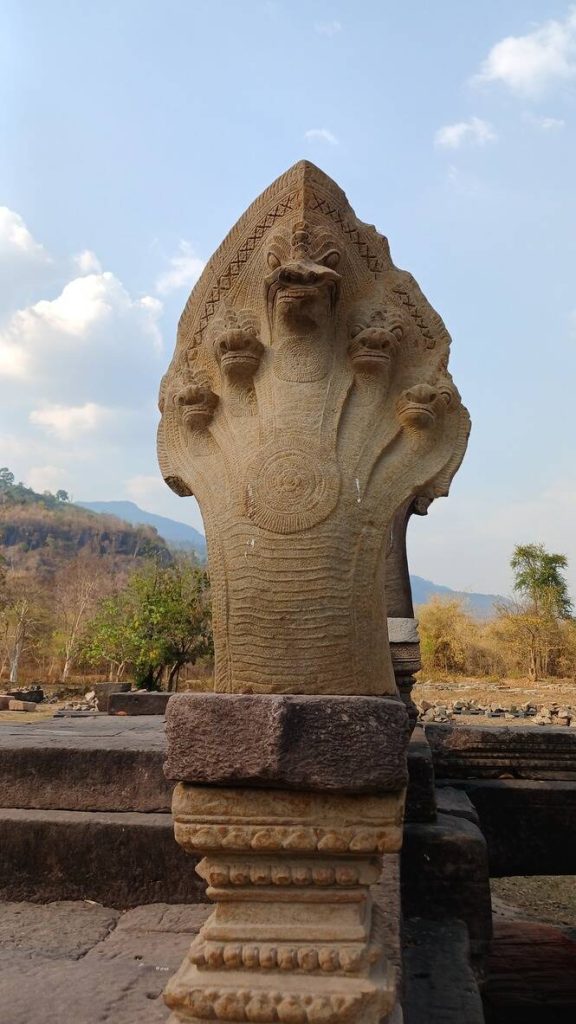
The entrance is free and it’s easy to visit if you’re on a motorcycle – only 2.5 km from Vat Phou’s entrance.
Other ways to visit Vat Phou
If you can’t or don’t want to ride a motorcycle, there are other ways to visit Vat Phou, albeit a bit more difficult or more expensive.
There is no public transport that goes all the way to Vat Phou from Pakse.
Day trip
The easiest option is to book with one of the tour agents in Pakse. Their tours are not listed online on Get Your Guide, Viator, or Klook but if you just turn up at any tour agent in downtown Pakse, they can book you on a tour for the next day.
You’re looking at 450.000 to 500.000 LAK for a day tour, including everything.
Do it Yourself
There are early morning songthaews departing from Daoheuang Market in Pakse bound for Champasak. What time they leave is a mystery but usually around 9-10.
In Champasak, you can rent a bicycle and cycle the 10 or so kilometers to Vat Phou. Or hire a tuk-tuk.
Unless you hitchhike back, you will have to spend the night in Champasak as there is no afternoon public transport back to Pakse. Fortunately, there are plenty of guesthouses there.
Is Vat Phou worth a visit?
Yes, Vat Phou is worth it! It’s ancient, it’s relatively well-preserved, and it presents awesome views of the whole area below.
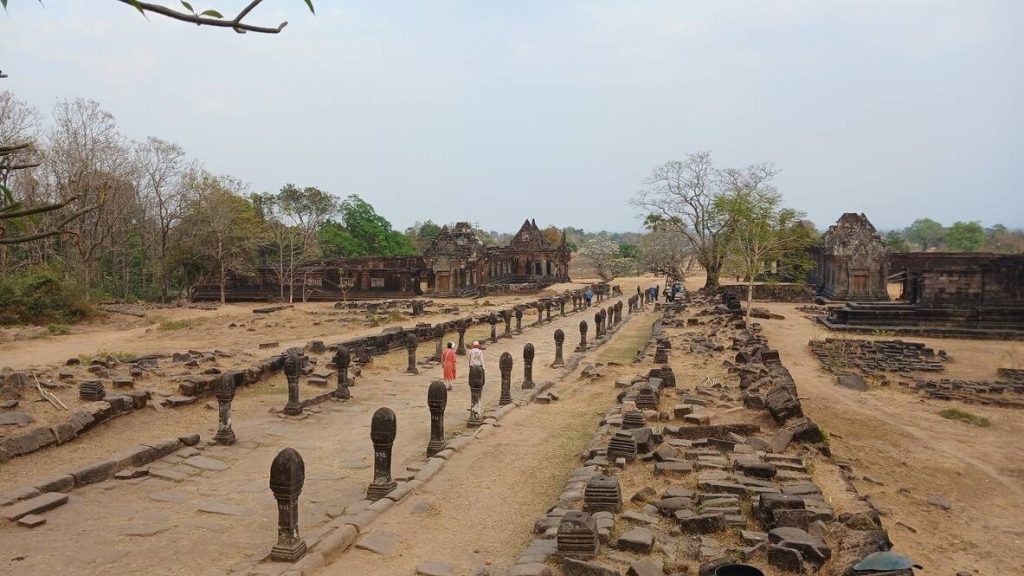
The ruins are cool, the inscriptions and ornamentations are fascinating, and the whole area is marvelous.
Just manage your expectations – if you’re seeking a huge complex with various temples – Vat Phou isn’t it. It’s manageable and is delightful in its own way.


